
We have been eyeing the Lapierre Spicy CF 7.9 for some time now, after chatting with enduro athletes who have raced the balanced 170mm carbon 29er. There are three builds priced above this one, another three below, and an additional four electrified models called Overvolt. The Spicy can run a set of 29″ wheels, or mixed, simply by flipping a chip near the BB and swapping the rear wheel. That useful geometry adjustment makes this a great bike for folks who want to race enduro on a wide variety of tracks or ride fast on similarly rough terrain.
At 15.25kg (33.62lbs.) for the size medium Spicy CF 7.9, with Shimano Saint clipless pedals mounted, it’s a reasonably lightweight build. However, it could both drop weight in some areas and gain it back in others before race day with a key few component swaps. We’ll dig into that those below.
Tester details: 175cm (5’9″) tall | 69kg (150lbs) | 76.5cm (30″) inseam | Age 10 x 4 (a childish version of 40) | Tested primarily in Turin and Finale Ligure, Italy
Frame details

The carbon frame uses a Horst-link suspension design to manage rear wheel impacts, with a Trunnion mounted shock that passes through a tunnel to clamp to the chainstays. Below that shock, there is a stash compartment that can be opened without tools where riders can hide tubes and a CO2 inflator, which will come in handy if folks choose to race an enduro on the Maxxis EXO+ tire casings that the Spicy comes dressed in.

All of the cable housing and brake hoses are internally routed and as silent as can be, with clean transitions between the triangles. There’s no question that this bike is a clean-looking race machine. All of the cables run over the BB, so there’s no chance of catching or smashing them on anything.

Complete Spicy frames come with 203mm rotors front and rear, as any gravity bike should, and the proprietary post mount is a tidy touch to replace the giant glob of carbon fiber that’s used on a lot of frames. I thought that the long chunk of exposed brake-hose might create noise and possibly clang against the spokes, but I had zero issues with it throughout the review.

The size medium Spicy that I tested has the rebound dial spun to the front, making it almost impossible to access between the shock tunnel braces. Someone spun the shaft so that the dial is at the rear on the size large, which is a far more convenient location. The integrated rear fender does a mediocre job of keeping mud off the shock, and an adequate job of keeping the main pivot free of debris. If this were my personal bike I would add some material to the fender to better protect the shock body and bottom-out bumper. Alongside that little fender, there is ample space for mud clearance with the stock 2.4″ rear tire.
I tested two sizes of this bike, and both of them produced a frighteningly loud noise from around the rocker link on a few different occasions. The sound was loud and abrupt enough that I assumed I had broken the bike. I reached out to Vincent Julliot at Lapierre and he said that the sound comes from a shim in the shock when it’s rebounding. “Following the feedback from Gerow, we investigated to find what was the problem. It appears that on some Ohlins TTX22M rear shocks, set specially to fit with Lapierre SPICY 7.9 kinematics, we are using a very thin shim to manage rebound. That shim, when it deforms under oil pressure, is doing a ‘clacking’ noise. It’s not happening every time but it can happen sometimes. Ohlins French after-sales service was aware of it and if needed they can change the internal shim set to avoid this noise” While this won’t create any real problems for the bike, it’s a disturbing sound when you hear it echo through the cavernous carbon pipes. Fortunately, it’s something Lapierre knows about and they are adjusting the tune in this shock to eliminate the sound.
Geometry thoughts

The first Spicy CF 7.9 that I rode was a size medium, with an average head tube angle (HTA) of 65°, a notably short reach for an enduro race bike of 440mm, stubby chainstays that measure 433mm on all but the size small, and a relatively slack 74.5° seat tube angle (STA). All of the angles and measurements on this bike are on the shorter side, seemingly designed for tighter and more technical descents.
The Spicy’s seat tube is the slackest I’ve experienced in a few years, and it made the shorter reach feel comfortable while seated and climbing. It also made the pedals feel too far forward, even with the saddle slid as far ahead as the rails would allow, and it was difficult to properly weight the front wheel on steeper climbs. I thought about mounting a longer stem, but the bike comes stock with a 45mm bar-grabber, and bikes like this don’t handle as well once the stem is longer than the fork offset, so I left it alone.
This same seat tube angle can work well on a hardtail since the tube steepens considerably with sag, but on a full-suspension bike, it feels fairly awkward once you’re accustomed to sitting above the cranks where you can easily lean on the bars to increase front tire grip. This bike is designed to go downhill, so the slack STA isn’t a deal-breaker, but it does seem like something Lapierre will be updating on the next iteration.
While the seat tube maintained its lean, the extra 25mm of reach on the size large felt far more comfortable in the gravity position. This is why reach measurements are so much more important for gravity bikes than the effective-top-tube (ETT) span. The 440mm reach felt boxed in like I was riding a kid’s bike, but thanks to the STA it has a slightly longer ETT than my daily driver that has a stable 470mm reach. On descents, it’s the space between your feet and hands that matters, and with the saddle removed from the equation the size large Spicy frame felt fantastic.
To summarize these geo thoughts, not all bikes will fit all riders, and this bike only fits me well while standing. If I were working with Lapierre I’d ask for the size medium to gain at least 15mm in the reach department, and for the seat tube to move a minimum of 2° steeper across the size run. Folks who are accustomed to pedaling above a slacker seat tube and who want a shorter reach with massive travel numbers will likely dig this bike.
Build considerations

A reader commented on the Spicy “In for test” article saying that the full Shimano drivetrain would make more sense with an XT shifter that allows two downshifts at a time in place of the single-clicking SLX that the bike comes with, and I’d have to agree. I would happily trade the XT derailleur for an SLX model and upgrade the shifter, or simply upgrade the shifter and add €20 to the overall price of the bike. The Deore 12-speed cassette is a sturdy option, and it’s somewhere riders could easily shave a bit of weight if desired. While cassettes are quite expensive, this full-steel model is also quite heavy.

It’s rare that a complete bike comes equipped with proper tire casings, and this one is no exception. The Maxxis Minion DHF and DHR II with MaxxTerra tread are an appropriate choice for the bike’s intentions, but the EXO+ casing is not tough enough for enduro racing or aggressive gravity riding. While you may get away with it up front, the rear tire needs to have the dual-ply protection of a DoubleDown, DH, or similarly enforced carcass. Any weight saved by swapping parts on this build could be replaced with tougher tires.
The aluminum handlebar could also be swapped out for a lighter carbon one, though the house brand bar and stem on the bike fit it quite nicely. There’s also a house-brand set of grips that I liked with bare hands, but they felt too thick with gloves on.

The size small Spicy frames include a 125mm dropper, medium 150mm, and the large and XL sizes both get 170mm of post travel. The post travel is adjustable, and I would have requested a size large bike from the get-go if I had known that. I had to slam the post all the way in the frame on the large and reduce the travel slightly to dial in the fit.
The DT Swiss E1700 Spline wheels and 4-pot Shimano XT brakes both worked splendidly, as they typically do. I lumped these components together because they both perform well on every test bike, and they are undoubtedly appropriate for an enduro race ride like the Spicy. There’s little else to say, as they are just solid parts that do exactly what you expect them to.
Finally, the Öhlins TTX22 shock and RXF36 R TTX18 3 Air (maybe they could rename it AlphaNumera?) fork are a sweet spec for racing, as both can be tuned in for maximum support and grip. The 343lb. coil spring on the size medium was a little under sprung for my weight (69kg), and I had to dial the compression in all the way and leave the rebound fully open to keep it from bottoming out regularly. The size large bike jumped up two spring steps to a 388lb. spring rate, which felt far better for my weight and riding style. With the stiffer spring, I was able to adjust the compression and rebound for a more precise rear wheel feel.
Trail talk
“Some days are diamonds. Some days are rocks. Some doors are open. Some roads are blocked.” Thanks, Tom Petty and the Heartbreakers! Some bikes have all the anti-squat a climber could want, and some need a climb switch on their rear squisher. The Spicy is definitely one to flip that switch on, as the ground-gluing traction that the Lapierre engineers packed into the kinematics keeps the rear end fairly active while climbing. With that switch flipped halfway or closed, the rear wheel maintains enough movement to grip its way up rocky climbs. One advantage of the slack seat tube angle is that I haven’t lost rear tire traction on the bike, even while climbing through wet stones.
Maintaining contact between the front tire and the ground is a different challenge. With the saddle slammed forward, long beyond its recommended limits, I have to sit toward the nose of the saddle in order to manage the front wheel’s direction and grip when a climb tips steep. Having not ridden like that in a few years, the climbing position took some relearning with this bike. The more technical a climbing segment is, the more I have to focus on weighting the front tire, consistently sliding toward the uncomfortably narrow end of the butt platform. Regardless of the frame size, I would mount a dropper with an offset seat clamp on this bike, like this one from 9point8. The offset would allow for a more forward saddle adjustment to better balance my weight between the tires.
Enduro races aren’t all downhill, and athletes need a solid frame to transfer sprint watts. The Spicy has this bit locked down. The frame offers just enough flex to keep it from feeling nervous, while the power transfer feels as immediate as the best high-end carbon triangles should. With a supportive fork tune, you can lean forward and pull across the alloy handlebar as hard as you like, never squeaking the rear tire into the frame. In a pinned sprint position the active rear suspension maintains a positive connection with the dirt, and the bike feels light and fast when you’re giving it all you’ve got.
Bermed or flat, this frame is comfortable in corners. I thought that the short rear end would feel nervous or unbalanced in turns, but that’s not the case. The size large bike felt balanced and well composed in fast turns, riding ready, just like it was on the straight stretch a few meters back. While I don’t know the anti-rise numbers for the Spicy, I’d guess that the number is a fair bit above 100% because the suspension can easily be loaded up under hard braking, then kept in that lower squat through the apex of a turn to shoot out the other side. This preload-and-spring game is one of my favorite feelings on a mountain bike, and I genuinely enjoyed pressing this bike through some berms.
On flat turns, the size large was noticeably more comfortable, with additional space between the traction patches to manipulate balance. Once the suspension is dialed, both bikes play well with off-camber roots, keeping the wheels moving while the front triangle remains fairly stable for a smooth pilot experience. The Öhlins TTX22 shock seems designed for off-camber grip and flat turns, allowing you to lean forward considerably before losing rear wheel traction.

Suspension kinematics for the Spicy provide a more progressive leverage curve than other bikes I have ridden with a coil, giving the bike a lot of rabbit for its rhino. Put differently, while the shock offers all of the trail glue you want on fast and loose segments, there is a nice kick in the last third of the travel to push against. If you see a natural kicker to pop from, the Spicy will give back a good amount of energy for your efforts. Coupled with the low overall weight of this 170mm ripper, the rabbit is alive and awake inside these carbon tubes. I didn’t have to run the rebound super fast to achieve that pop, keeping it a full click below the too-fast line. If you’ve ridden an Öhlins coil, with its six staunch clicks of rebound, you’ll know that one click below the line is plenty.
On tight trails, I really enjoyed the size medium Spicy, with its narrower 760mm handlebar and shorter 1,195mm wheelbase. I generally prefer a longer bike that has to be pulled and prodded through tight tracks but flies down the rougher ones, and the little Spicy offered up a fun alternative to my usual. While the short reach wasn’t ideal at speed, it made for a fun ride on the tricky and plungey trails like those on Caprazoppa in Finale. I also rode the size large on those tracks, and the two bikes played a notably different game with the dirt. The soapy stones were wet from a long evening storm, and with the large, I could let go of the brakes a little more often than the medium, but the smaller bike was a touch easier to nose pivot in the janky stuff. On the other end, the short chainstays make pulling the front end off the ground a breeze with both sizes.

While both of these frame sizes can work for my height, I would buy the size large without question. The large bike’s 465mm reach is shorter than a number of the long travel bikes I have tested, and it feels like the perfect length for my stature. The 65° head tube angle is just right to keep the bike maneuverable while still being slack enough on steep trails, and apart from the seat tube, all of the decisions and compromises on this bike seem like they were made in favor of a fun race machine.
Designed for gravity, the Spicy feels fantastic when you’re pointing it toward the parking lot below, or sprinting your daylights out. The fit challenges that I experienced will undoubtedly be a delight for someone with different body geometry, and that person will likely love getting spicy with it.
Video review
Overall
Folks who are hunting for a long-travel bike that spans the rabbit-to-rhino spectrum well and keeps the weight down will be stoked on the Lapierre Spicy, provided the geometry fits their body and riding style. It excels on tighter trails, where a massive wheelbase and slacker head tube would feel cumbersome. Anyone who wants a more agile bike than what’s currently flowing in the mainstream will be set on their usual frame size, while riders who want a little added stability can size up — provided they’re not too tall. We look forward to seeing what the talented Lapierre Zipp Collective riders can do with this platform in 2021, and what changes the brand has in store for the next Spicy.

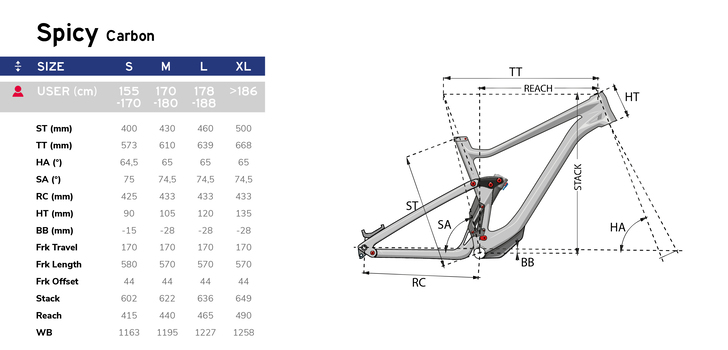
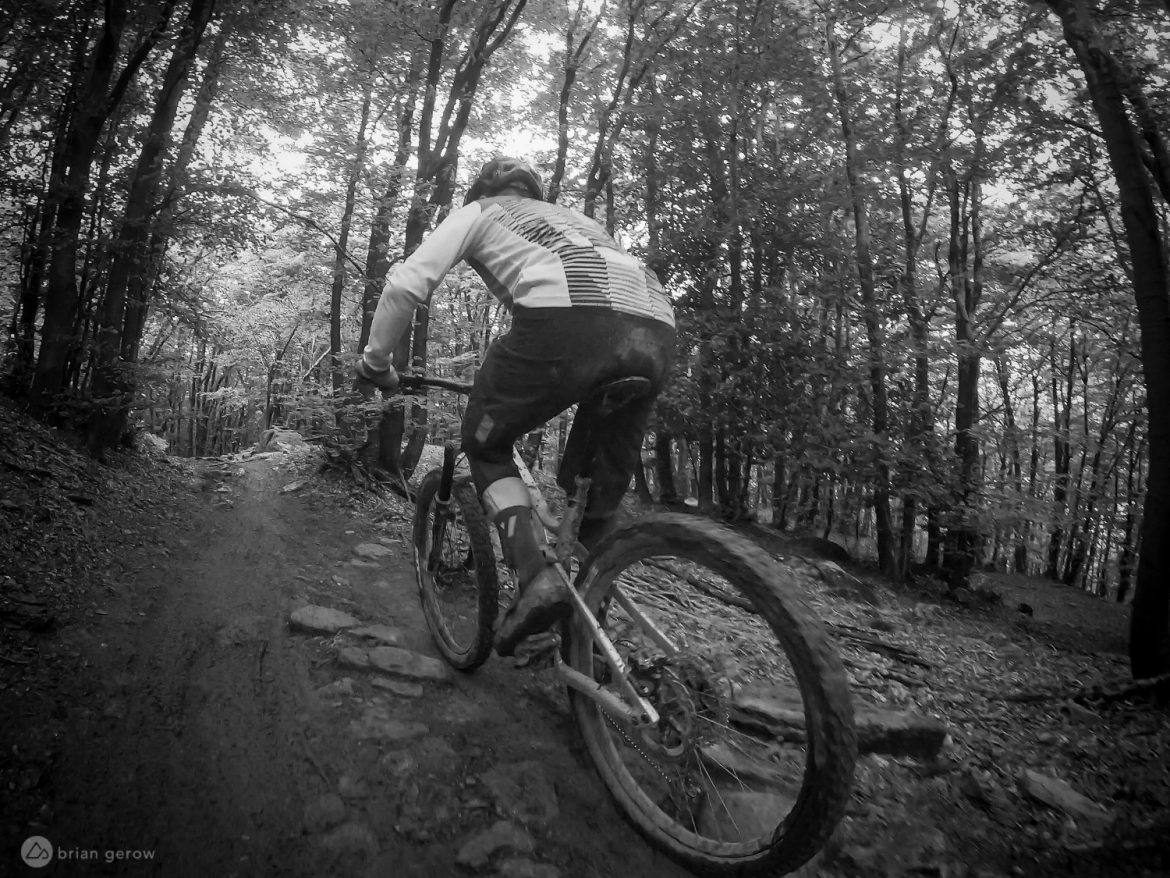
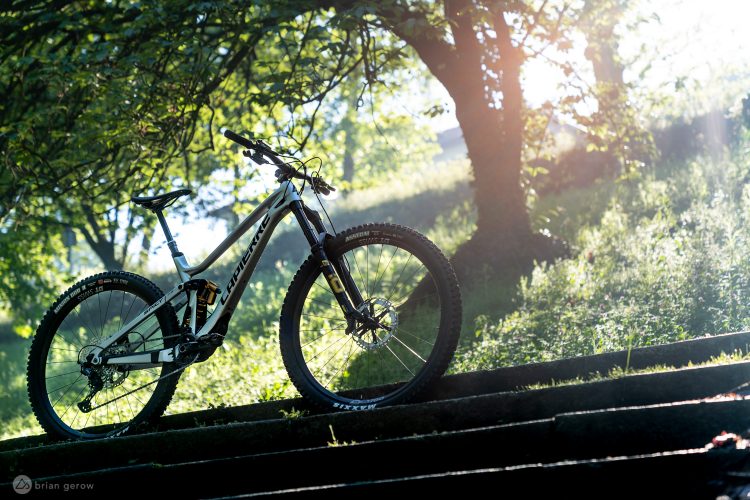



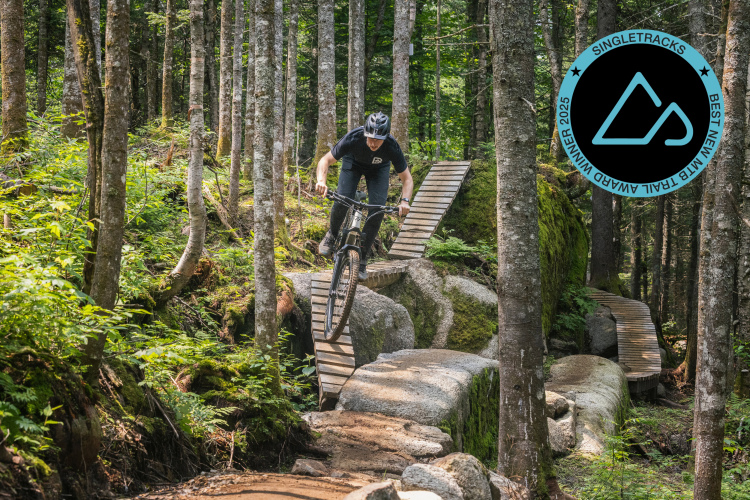
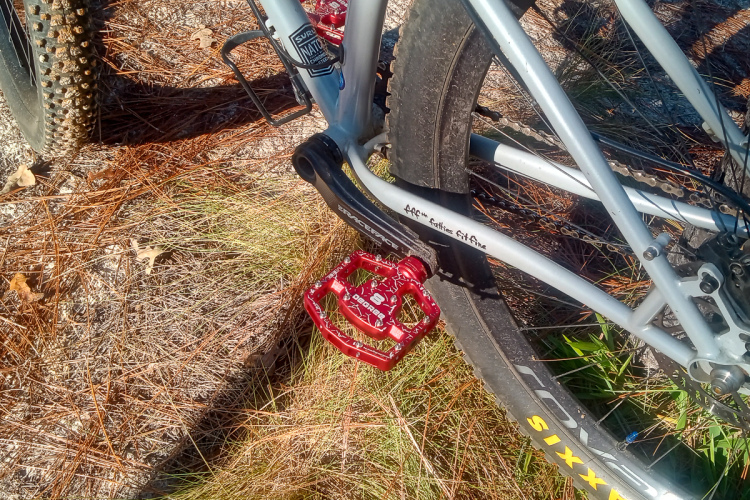



0 Comments